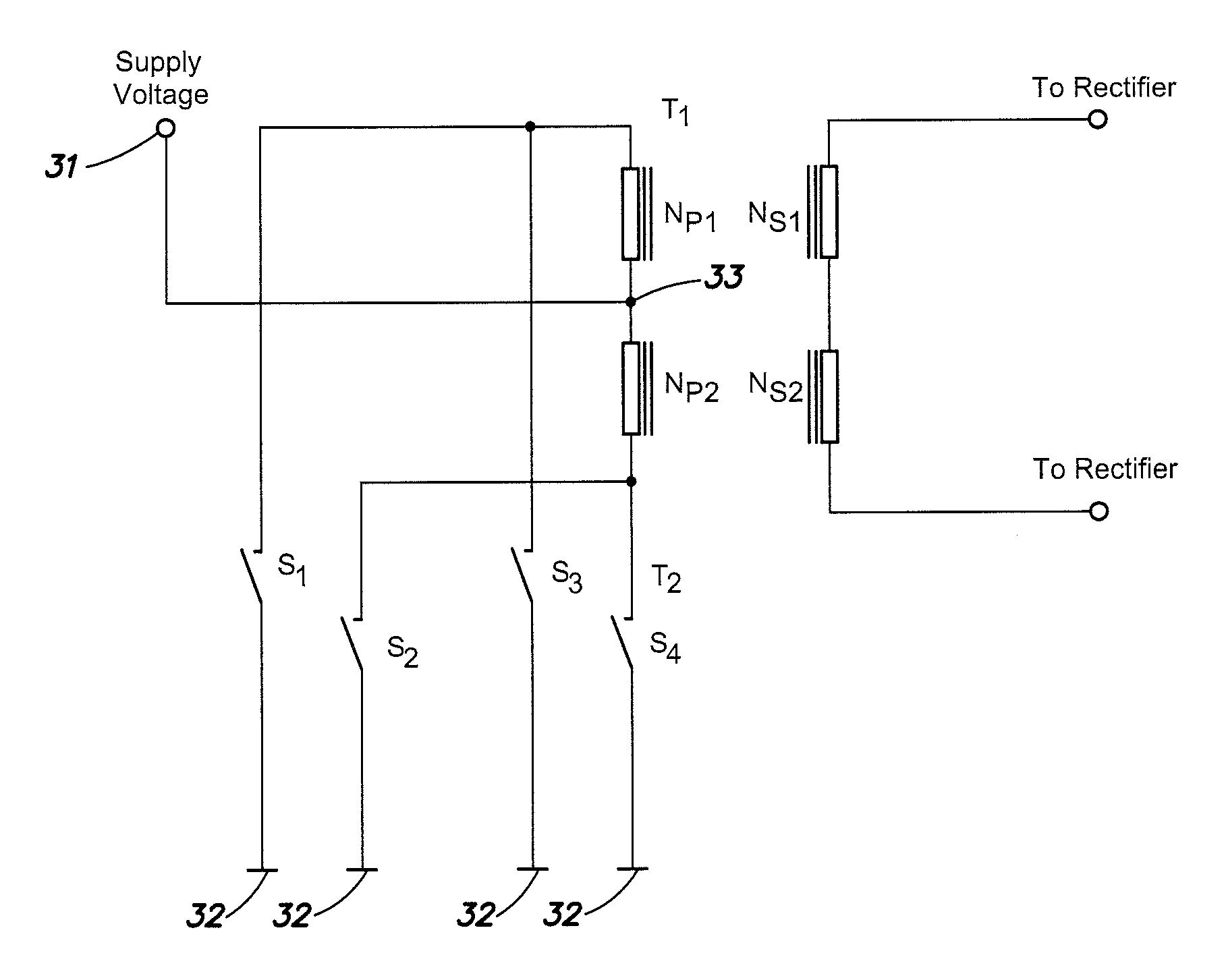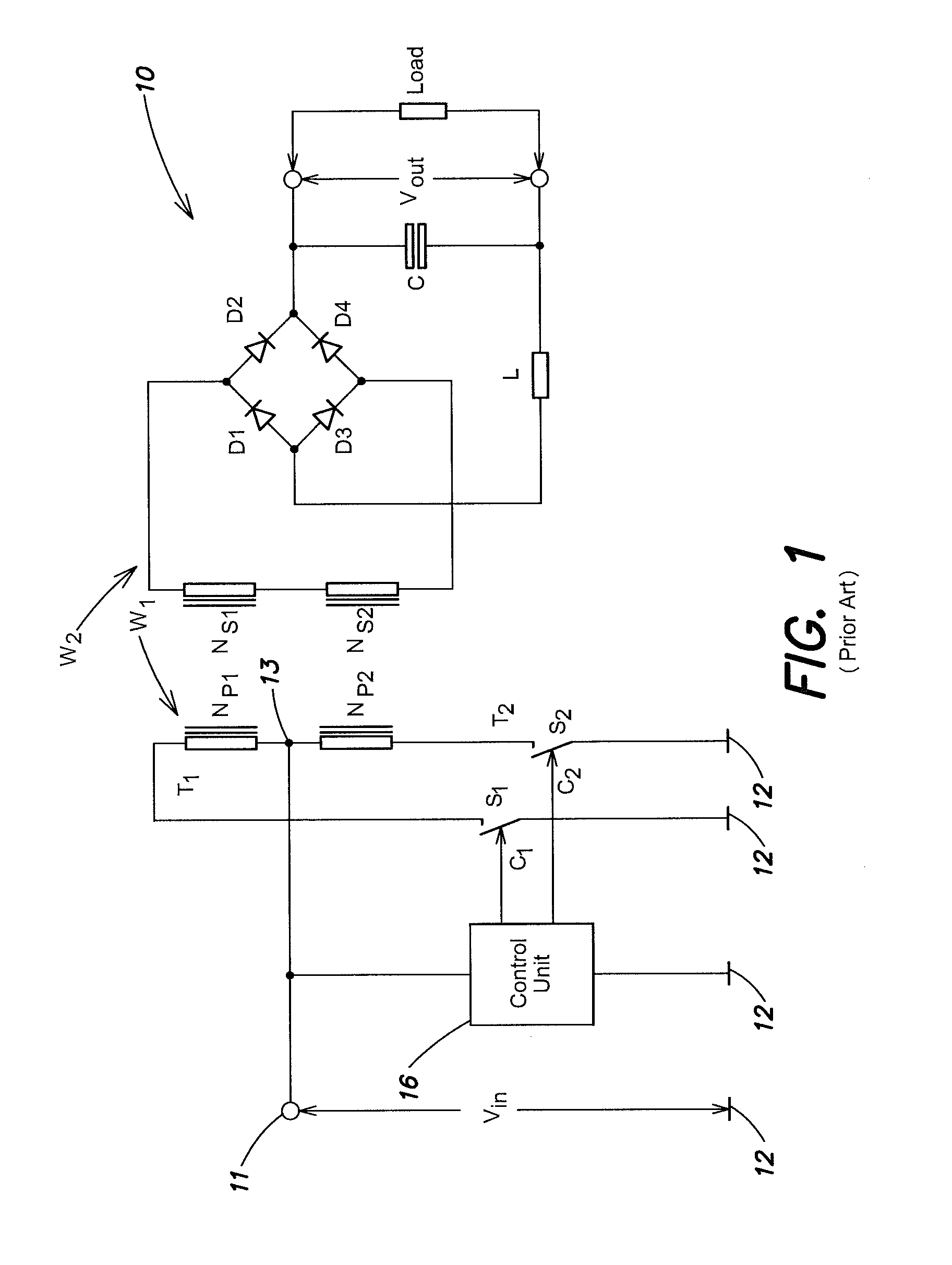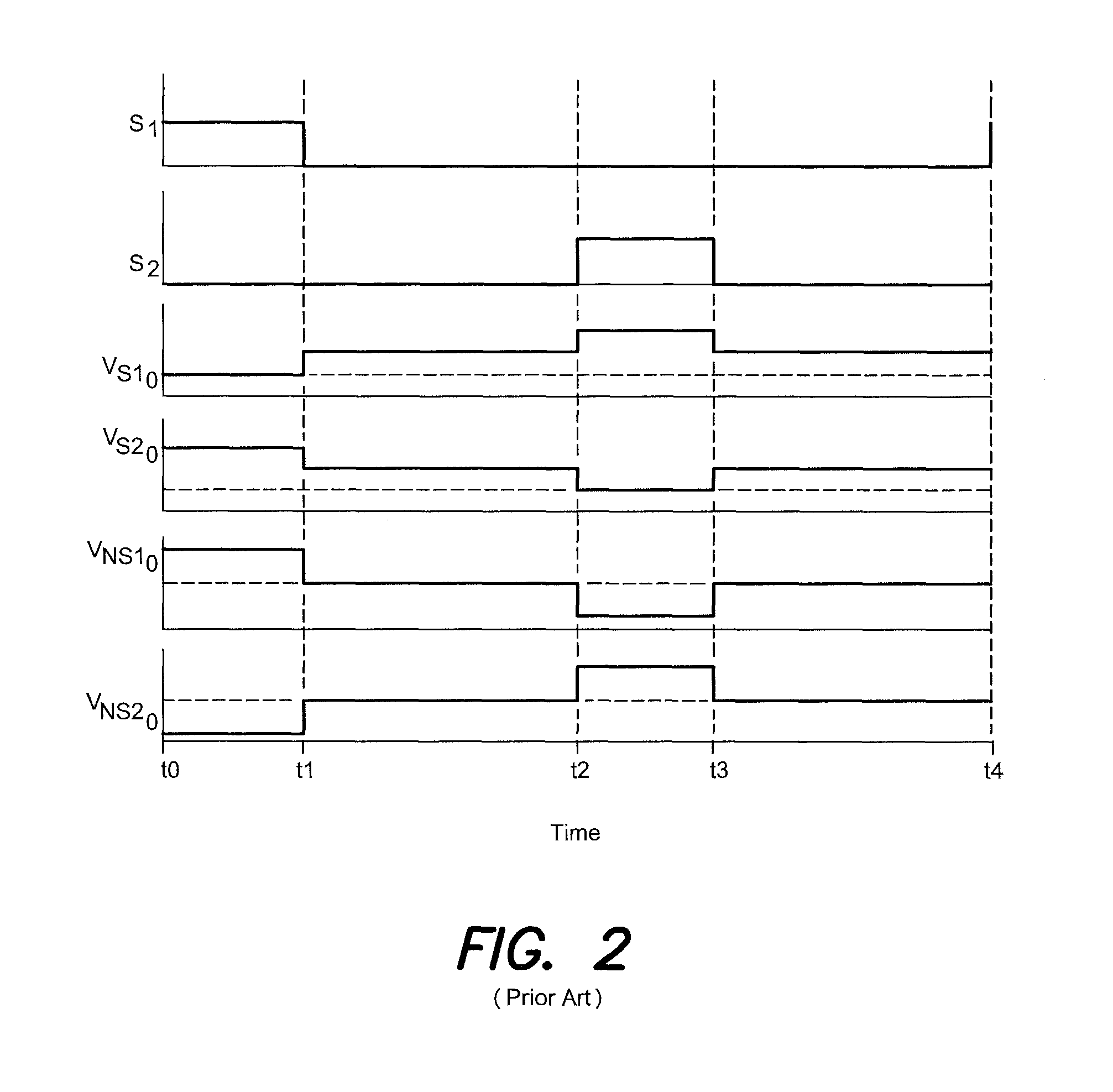Multilevel push pull power converter
a power converter and push-pull technology, applied in the direction of dc circuit to reduce harmonics/ripples, electric variable regulation, instruments, etc., can solve the problem of more dynamic power dissipation, output voltage cannot be zero, and high switching loss
- Summary
- Abstract
- Description
- Claims
- Application Information
AI Technical Summary
Benefits of technology
Problems solved by technology
Method used
Image
Examples
Embodiment Construction
[0041]The present invention is further described in detail with references to the figures illustrating examples of the present invention.
[0042]FIG. 3 is a circuit diagram of a power converter according to an aspect of the present invention. The power converter 30 converts an input voltage Vin into at least one output voltage Vout. Compared to the conventional converter shown in FIG. 1, the power converter 30 includes two additional switches S3 and S4 and two additional primary winding sections Np3 and Np4. Specifically, the power converter 30 includes a first supply potential 31 and a second supply potential 32 established by the input voltage. One of these two supply potentials, here the second potential 32, may be the ground.
[0043]The power converter 30 also includes a primary winding W1 that is divided into four sections Np1, Np2, Np3 and Np4, by three taps33, 34 and 35 arranged between the two end terminals T1 and T2 of the winding. Apart form the center tap 33, which is arrange...
PUM
 Login to View More
Login to View More Abstract
Description
Claims
Application Information
 Login to View More
Login to View More - R&D
- Intellectual Property
- Life Sciences
- Materials
- Tech Scout
- Unparalleled Data Quality
- Higher Quality Content
- 60% Fewer Hallucinations
Browse by: Latest US Patents, China's latest patents, Technical Efficacy Thesaurus, Application Domain, Technology Topic, Popular Technical Reports.
© 2025 PatSnap. All rights reserved.Legal|Privacy policy|Modern Slavery Act Transparency Statement|Sitemap|About US| Contact US: help@patsnap.com



